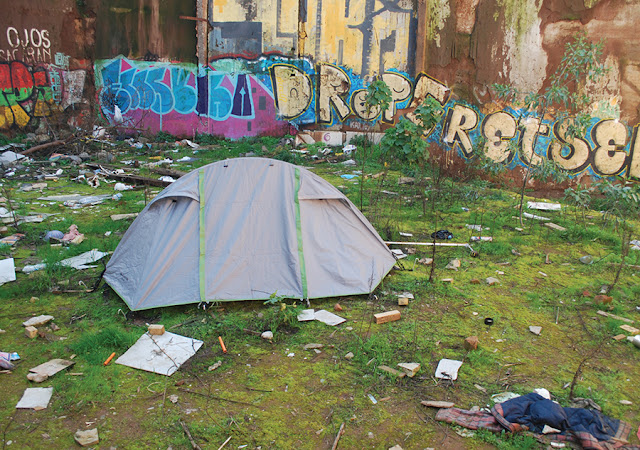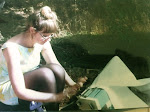Review: Mouths and Meaning, Bronwyn Platten, Sarah Coggrave and others
by Adele SliuzasAustralian Experimental Art Foundation, Adelaide
1 February-2nd March 2013
Blurring the boundaries between art, art therapy and biographical practice, Bronwyn Platten's recent exhibition Mouths and Meaning emphasises the current role of social engagement in contemporary arts practice. Mouths and Meaning is a multidisciplinary collaborative art and research project that extends beyond the gallery space. The exhibition pieces together paintings, performance, video work and installation that explore relationships to the body and dislocations between mouths and meaning.
Originally from Adelaide, and now working from Manchester, UK, this solo exhibition sees Platten return to the AEAF ten years after her previous exhibition in the space. Her work explores the body, in particular experiences of identity, sense and communication as highlighted by the exhibition’s title. The project includes a body of research and multiple collaborators, moving between the fields of art and health.
Within the gallery Platten has created an affective space, encouraging the viewer to engage and respond on a corporeal level; the works make you feel within your flesh. The mouth is presented as a site to be explored and to be embodied. As a threshold between the inside and outside of the body, the mouth is a liminal space. It is the site of pleasure experienced through tastes, sensations, speaking and laughing. Equally, the mouth is the site of horror and betrayal; spitting, slurring, saying the wrong thing, eating too much, or not enough. Platten invites the viewer to become aware of their perception of their mouth as an entry to the body. In Anatomical Sense, a cluster of small oil paintings, Platten fragments the body, dissecting individual sense organs and inviting the viewer to consider the materiality and mechanics of their senses one at a time.
The subjective experience of one’s own mouth is brought to the fore within Platten’s Untitled (Mouth Drawing). This collaborative series shows drawn images of interpretations of the inside of a mouth. Collaborators were asked to slowly drink a cup of water and record the sensation; movements of the tongue, the taste, the feeling of liquid pushing up against the cheek and teeth. A multisensory experience, some drawings describe the mechanics of the mouth, others describe ideas of closeness, wetness or tongueness through abstract lines.
The feeling of embodiment within the mouth is again raised in Body To Brain and Back Again. The work sits across two platforms; a video of a performance by Platten, alongside a series of flashcards with words stencilled on their surface. Within the performance, Platten appears in a nurse’s uniform, with shoes on her head and books crudely strapped to her feet. Humour and childhood playfulness are a way for Platten to contemplate dysfunction and describe experiences that are personal and difficult, but that art can transform. She acts out all of the words in the dictionary from the entry "Body" to the entry “Brain”, corresponding to the flashcards on the floor. Just as in Untitled (Mouth Drawings), this exercise allows Platten to actively consider her mouth, feeling the words and the movements of her anatomy. She questions what the words do and their physicality as they turn from concepts within the brain to actions by the body. In response the viewer questions their own body and feels impelled to experience the sensation.
More than just art therapy, Platten’s practice is relational, creating meaning through experience. Exchange and collaboration form an essential part of the dialogue. Working with emerging artist and recovering anorexic Sarah Coggrave on video performance Untitled (The Party), Platten engages humour to discuss the dynamic relationship the two artists have with food. The performance is a social intervention as much as relational artwork. Despite its bright childhood colours, playfulness and humour, it isn’t easy to watch. There is absurdness in that no food is ever seen entering the mouth. Cream fills gumboots into which the artists put their feet, feeling the sensation of the fatty, squelchy cream against their skin. Pockets are stuffed with cakes. The anxiety and tension is high, and through their laughs and struggles, the performance opens them up to experience the joy, horror, power and control exerted by the mouth/food dynamic.
Originally published in Artlink Volume 33, no 2, 2013








